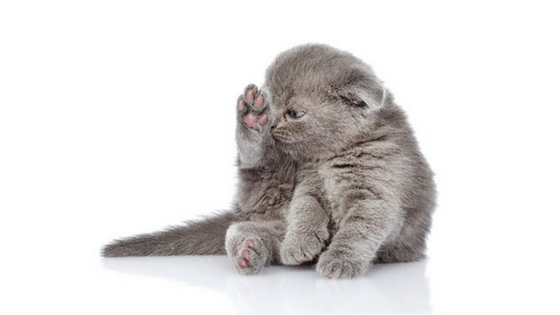
If you are a cat parent or cat lover, have you ever wondered why do cats get hairballs? Hairballs may be disgusting, but they occur as a result of your cat’s healthy and meticulous grooming routine.
You see, each time your cat grooms himself, little hook-like structures on his tongue latch on to dead and loose hair, which is then swallowed. The bulk of these hair strands often passes through the digestive tracts without problems. However, if some hair remains in the stomach, it can create a hairball. Finally, your cat will throw up the hairball to get rid of it. Hairballs often appear thin and tube-like, rather than round because they pass through the narrow esophagus on the way out.
For Hairball Awareness Day, celebrated yearly on the last Friday of April, we put together more reasons why cats get hairballs.
Causes of Why Cats Get Hairballs
- Most hairball cases are a result of one or more of the following: excess ingested hair, GI problem or a moisture-deficient diet.
- Long haired cats such as Maine Coons and Persians are more prone to hairball issues than kitties and short haired cats with shorter fur simply because they have more hair. This makes it essential to groom your long haired cat regularly.
- Skin conditions caused by infections, allergies, or parasites can lead to over-grooming or excess shedding. Psychogenic alopecia, also called over-grooming, is a disorder in cats that can result in large quantities of ingested hair.
- Cats who only eat dry food may not be all the moisture their organs need to function efficiently. Kitties don’t make up the deficiency by drinking lots of water, unlike dogs. The digestive tract of a well-hydrated cat eating a species-appropriate diet is able to transport a hairball than a GI tract that is depleted of moisture.
- A digestive tract compromised by parasitic infections, inflammatory bowel disease, foreign objects, cancer, etc. may not be able to process even normal hair quantity. If your cat has a chronic hairball problem, you may want to have your vet check for other underlying diseases requiring treatment.
- Once in a while, a hairball can grow big enough to be life-threatening and might require a surgical removal.
Grooming your cat is one of the best ways to prevent your cat from getting hairballs. Regular combing or brushing removes most of your cat’s loose hair before it gets ingested. This limits the amount of hair that your cat swallows. In turn, less hair swallowed means fewer hairballs being produced.
If your cat stops eating, vomits frequently, loses weight or shows other symptoms, it’s time to call your vet.
If you have a cat, does your cat get hairballs?
